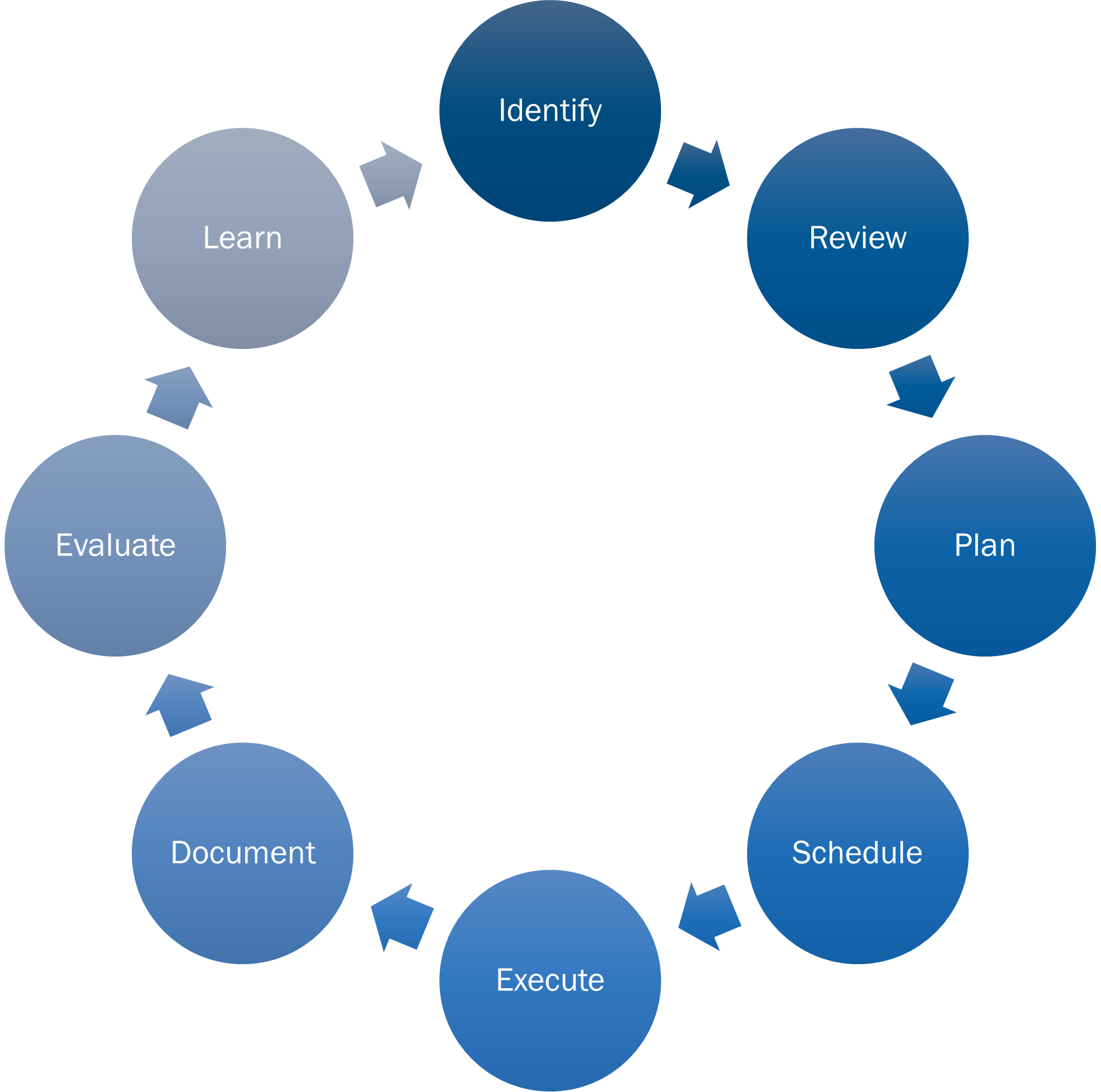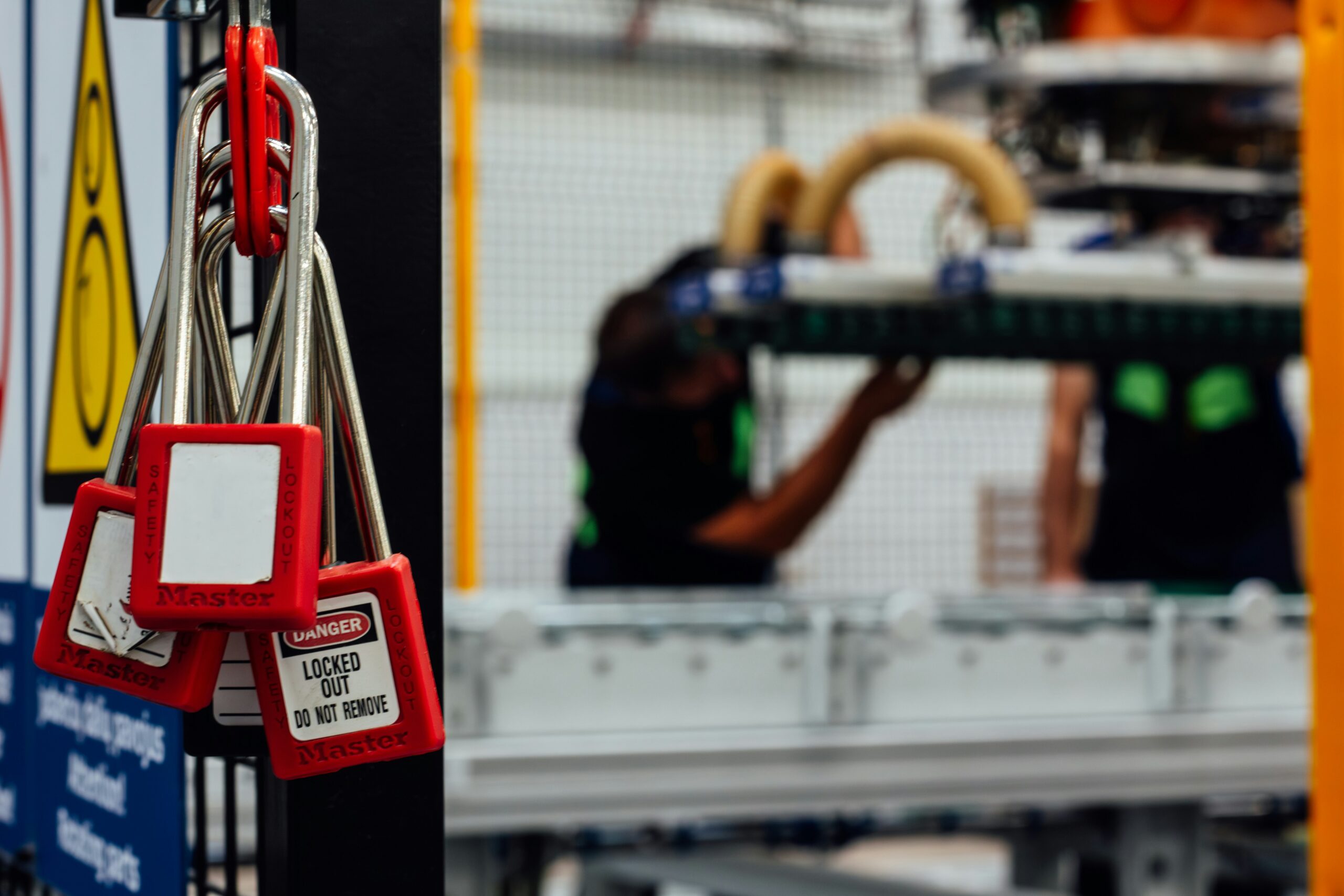The plant maintenance life cycle is a familiar process in industries where maximizing productivity, limiting interruptions and having safe, operational facilities is key. Sometimes called “closed-loop maintenance” or “work-order life cycle,” this framework ensures that all maintenance activities are scheduled and performed safely and correctly.
What is the plant maintenance life cycle?
The plant maintenance life cycle is a conceptual multi-phase process that provides the foundation for productivity and continuous operational improvement. The first half of the life cycle involves preparation. Execution then is enriched by subsequent stages that capture any insights gained. In principle, eight stages are involved.
- Identify: What work needs to be done (installation, maintenance, repair etc.)?
- Review: Do we have enough information to perform this work?
- Plan: What are the steps to complete this job? Who will be involved? How long will it take?
- Schedule: When does the work need to be finished by? Will certain contactors only be on-site for a short period of time?
- Execute: How do we conduct the work safely and efficiently? How do we ensure lockout/tagout (LOTO) before maintenance workers get to the site?
- Document: How did we fix the problem/perform the job? How long did it take versus how long was planned?
- Evaluate: Should we add or update preventative maintenance tasks? Are we managing time efficiently?
- Learn: Is this piece of equipment breaking frequently? Could we change part of the process or equipment to maximize our productivity?

Each stage typically includes sub-steps, in particular, review by the manager or supervisor and handoff to the next function. At smaller facilities, a single person may complete multiple steps. At larger facilities, several individuals might be responsible for completing each step.
Through enterprise asset management (EAM) or enterprise resource planning (ERP) systems, large portions of the plant maintenance life cycle are already digitalized. However, companies can further streamline critical portions of the life cycle and reduce the risk of errors by understanding their natural efficiencies; relying on training and the advice of consultants; and adopting third-party solutions targeted at maximizing employee efficiency.
Why improving processes boosts safety and efficiency
As a part of a company’s maintenance, repair and operations (MRO) processes, the plant maintenance life cycle focuses on physical assets such as the building and equipment. As the name suggests, MRO also includes the activities associated with the daily operations of a business.
Improving MRO processes allows companies to increase safety and efficiency from the core. From standardizing and streamlining existing MRO processes to enhancing visibility and communication, digital tools provide an unparalleled boost to safety and productivity.
Currently, many plant maintenance systems are in a state of flux. Companies may be migrating from one ERP system, such as SAP, IBM Maximo, Oracle P6, JD Edwards, Peoplesoft or Epicor, to another. Having additional support and processes in place can determine whether the migration succeeds or not.
Regardless of the ecosystem used, Sphera’s ERP-agnostic solutions help companies adapt to their ever-changing landscapes and improve their processes.
How our digital solutions solve typical challenges
Within the plant maintenance life cycle, Sphera’s Control of Work supports the permitting processes during scheduling, which streamlines the execution phase. With Master Data Management (MDM) for MRO, operators have accurate, reliable spare parts data, which is critical in the planning and documentation stages. When companies implement these solutions to solve typical challenges, the benefits are not far behind.
Planning: finding parts in databases and warehouses
Challenges: Industry observations show that up to 30% of a maintenance engineer’s time may be spent searching for spare parts—whether digitally or physically. Many ERP systems are almost counterintuitive when managing parts due to rigid, unfriendly user interfaces. Cryptic descriptions, inconsistent naming and duplicate materials can also make it hard to find needed parts.
Benefits: Sphera MDM for MRO Finder is a user-friendly MRO search tool with a familiar, search-engine-like interface. Users can create, manage or extend parts information—add items from databases at other facilities—with ease. When coupled with Sphera’s in-house data cleansing services, MDM for MRO Finder allows users to find the exact part they need in seconds.
Scheduling: setting times for maintenance tasks
Challenges: A traditional ERP solution is typically focused only on maintenance activities. When using such systems for scheduling, the data is usually exported to Excel or a scheduling tool. This can lead to a lack of visibility for operators, who may need to LOTO a system before execution. It can also cause a lack of communication or possibly even an emergency in the field.
Benefits: Control of Work’s integrated permitting process ensures that all hazards are properly identified and safety-critical rules are followed, which reduces work-related risks. By verifying the schedule accuracy closer to the execution process, teams can rest assured that all safety-related activities are addressed before work begins.
Control of Work adds efficiency to the scheduling process with “last-mile planning.” Prework and hazards are included, as well as live status on the state of the plant, to inform managers and workers of deviations that may be occurring in the field. The operations maintenance coordinator gains visibility of the operational status, which increases safety.
Documentation: keeping data clean, employing data governance
Challenges: Without a standard taxonomy or best practices in managing spare parts data, ERP systems and MRO databases become difficult to navigate, untrustworthy and a source of inefficiencies. Poor data can lead to stockouts or even false stockouts, which may result in the need to expedite parts or pay higher prices if the parts are production- or safety-critical.
Benefits: Benefits: Sphera’s MDM for MRO is a holistic MRO data management solution that governs and helps maintain high-quality, searchable data. MDM for MRO’s Data Governance tool utilizes configurable workflows and built-in tools, such as duplicate detection and prevention, to help guide users when managing data.
Where Control of Work and MDM for MRO fit into the plant maintenance life cycle
Sphera offers more than a market-leading safety solution. Our software products Control of Work and MDM for MRO can help improve processes within the plant maintenance life cycle.
Control of Work: Through the software, operators facilitate communication, enforce standardization, reduce risk, increase efficiency and improve safety. The Control of Work solution:
- Empowers operators to understand all aspects of risk through risk assessment and activity risk management.
- Provides templates to make permit creation more efficient.
- Ensures that activities are performed only after safety precautions such as LOTO are in place.
- Sends automatic notifications or reminders of regular and upcoming assignments.
- Supports mobility through cloud-based services and is also available in offline mode.
MDM for MRO: Our solution is built upon Sphera’s industry-leading standard taxonomy, ensuring spare parts data is cleansed, organized and maintained consistently. The MDM for MRO solution:
- Uses our Material Master Assessment to evaluate the condition of MRO data before cleansing.
- Integrates bills of materials so users can find the individual parts that make up a piece of equipment. It also integrates service masters—descriptions of services procured—to help facilitate purchasing.
- Enables full standardization, classification and cataloging through Sphera’s Standard Modifier Dictionary, which contains templates for more than 2,800 types of parts (classes).
- Promotes efficiency through configurable data governance workflows, rules and roles-based capabilities. MDM for MRO is multilingual and ERP-agnostic.
Through the plant maintenance life cycle, companies aim to boost efficiency in plant operations and maintenance. Having clean and correct spare parts data saves time and money. Gaining visibility of all tasks, monitoring processes and evaluating maintenance records helps operators proactively manage their units and equipment.
Sphera provides a single source of truth for ongoing and upcoming maintenance activities. Operators know when, where and which MRO activities are performed and what drives the risks. Finally, to close the loop, companies acquire reliable data for audits and can document lessons learned.

